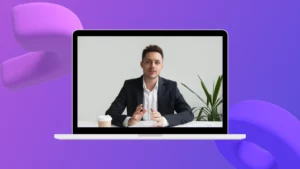
ultimate guide on How to Create and Sell Online Video Course
Table of Contents
How to Create and Sell Online Video Course
When choosing a topic for your online course, it’s important to consider what your target audience is interested in and what skills they want to learn. A good way to do this is to conduct research and see what topics are currently trending in your industry or niche.
You should also consider what you are passionate about and what you have knowledge or experience in. Creating a course on a topic you are passionate about will make it more enjoyable for you to create and will come across more engaging to your students.
Another important factor to consider is the competition in the market. While it’s good to have a popular topic, you should try to find a unique angle or approach to make your course stand out.
To sum up, when choosing a topic for your online course, consider what your target audience is interested in, what skills they want to learn, what you’re passionate about, and what gaps in the market you can fill.
How to research the market and identify gaps in the market for your online course.
Researching the market is an important step in creating an online course as it helps you understand what other courses are available, what topics are popular and what gaps in the market you can fill. This will help you to create a course that is unique and stands out.
Here are some ways to research the market and identify gaps in the market for your online course:
- Analyze the competition: Take a look at the courses that are currently available in your niche or industry. Look at the content, format, and pricing of these courses to understand what is already being offered.
- Check out online course platforms: Look at popular online course platforms such as Udemy, Coursera, and Skillshare to see what topics are popular and what gaps in the market you can fill.
- Conduct surveys: Reach out to your target audience and ask them what they are looking for in an online course. This will give you an idea of what topics they are interested in and what gaps in the market you can fill.
- Check out forums, social media and blog: Look at popular forums, social media, and blogs in your niche or industry to see what topics are being discussed and what gaps in the market you can fill.
By conducting thorough research, you will be able to create a course that is unique and stands out in the market, and also fulfill the needs of your target audience.
How to plan the content for your online course, including an outline of each video and the necessary resources.
- Create an outline: Start by creating an outline of your course. This should include the main topics that will be covered, the subtopics, and the order in which they will be presented.
- Break the course into manageable chunks: Break your course into manageable chunks such as sections, modules, or chapters. This will make it easier for your students to follow and understand the content.
- Determine the length of each video: Decide how long each video should be. This will depend on the complexity of the topic, but generally, videos should be between 5-15 minutes long.
- Identify the necessary resources: Identify the resources you will need to create your course such as images, audio, and video footage.
- Create a script: Write a script for each video. This will help you to stay on topic and ensure that your content is clear and easy to understand.
- Make sure your course is interactive: To keep your students engaged and make sure they are getting the most out of your course, try to make your course interactive by adding quizzes, polls, and exercises.
How to create the video for your online course using various tools such as smartphones, cameras, and software.
- Choose the right equipment: You can create high-quality videos using a variety of equipment, including smartphones, cameras, and webcams. Choose the equipment that best suits your needs and budget.
- Lighting: Lighting is an essential aspect of video production. Make sure that you have good lighting in your filming area to ensure that your video is clear and easy to see.
- Audio: Audio quality is just as important as video quality. Make sure that you use a good microphone to ensure that your audio is clear and easy to hear.
- Use editing software: Once you’ve recorded your video, you can use editing software such as iMovie or Adobe Premiere to edit and enhance your video.
- Add captions: Make sure to add captions to your videos. This will help your viewers to follow along with the video and will also make your videos more accessible to people with hearing impairments.
- Test your videos: Before publishing your videos, test them to make sure that they are working properly and that the audio and video quality is good.
How to host your online course on free platforms such as YouTube, Vimeo, and Udemy
- YouTube: YouTube is a popular platform for hosting online courses. It’s free to use and allows you to upload and share videos with a wide audience. You can also use YouTube to create a playlist for your course and make it easy for viewers to find all the videos in one place.
- Vimeo: Vimeo is another popular platform for hosting online courses. It’s free to use and allows you to upload and share videos. Vimeo also has a paid plan that offers more features such as the ability to customize your player and increase the video resolution.
- Udemy: Udemy is a leading platform for online courses. It’s free to create a course on Udemy, but the platform takes a commission on each sale. Udemy offers a variety of tools and resources to help you create and market your course.
- Setting up your course: Once you’ve chosen a platform to host your course, you’ll need to set up your course by creating a course title, description, and outline. You’ll also need to upload your videos and any other resources you’ll be using.
- Interacting with your students: Make sure to interact with your students, answering their questions and providing feedback. This will help to build a community around your course and ensure that your students are getting the most out of it.
How to promote your online course to reach your target audience through social media, email marketing, and paid advertising.
- Social media: Use social media platforms such as Facebook, Twitter, and Instagram to promote your course. Share links to your course and post updates about the course content and upcoming modules.
- Email marketing: Use email marketing to reach your target audience. Create a list of email addresses and send them updates about your course, including new modules and special offers.
- Paid advertising: Use paid advertising to reach a larger audience. Platforms such as Facebook, Instagram, and Google AdWords allow you to target specific demographics and interests.
- Leverage Influencers: Reach out to influencers in your niche or industry and ask them to promote your course to their audience.
- Utilizing webinars: Host webinars to give a sneak peek of your course and allow potential students to ask questions and get a better understanding of what your course is all about.
- Offering a free trial: Offer a free trial of your course to attract potential students and give them a taste of what your course is all about.
- Creating a landing page: Create a landing page for your course and use it as a central hub for all your promotional efforts.
How to market and promote your online course using social media platforms such as Facebook, Twitter, and Instagram
Social media platforms such as Facebook, Twitter, and Instagram are powerful tools for promoting and marketing your online course. Here are some tips on how to use social media to market and promote your online course:
- Create a dedicated page or group: Create a dedicated page or group for your course on social media platforms such as Facebook, Twitter, and Instagram. This will make it easy for people to find and follow your course.
- Share updates and information about your course: Share updates and information about your course on social media platforms. This could include information about new modules, upcoming webinars, or special offers.
- Use hashtags: Use relevant hashtags to make it easier for people to find your course on social media. This will help to increase the visibility of your course.
- Use visuals: Use visuals such as images and videos to promote your course. Visuals are more engaging and can help to increase the visibility of your course.
- Run social media contests: Run social media contests to generate interest in your course and encourage people to sign up.
- Collaborate with other educators: Collaborate with other educators and experts in your field to promote your course on social media. This will help you to reach a larger audience.
By following these tips, you will be able to use social media platforms such as Facebook, Twitter, and Instagram to market and promote your online course and reach your target audience.
How to market and promote your online course using email marketing.
Email marketing is a powerful tool for promoting and marketing your online course. Here are some tips on how to use email marketing to promote your online course:
- Build an email list: Build an email list of potential students by collecting their contact information on your website or landing page.
- Create engaging email campaigns: Create engaging email campaigns that inform potential students about your course, its content, and upcoming modules.
- Personalize your emails: Personalize your emails by addressing your recipients by name and tailoring your message to their interests and needs.
- Use a call-to-action (CTA): Use a clear call-to-action (CTA) in your emails to encourage potential students to sign up for your course.
- Segment your email list: Segment your email list based on the interests and needs of your potential students. This will allow you to send targeted and relevant emails.
- Track and analyze the results: Track and analyze the results of your email campaigns using tools such as open rates, click-through rates, and conversion rates.
- Schedule your emails: Schedule your emails to be sent at optimal times when your potential students are most likely to open and engage with them.
By following these tips, you will be able to use email marketing to effectively promote and market your online course and reach your target audience.
How to market and promote your online course using paid advertising on platforms such as Facebook, Instagram, and Google AdWords
Paid advertising on platforms such as Facebook, Instagram, and Google AdWords can be an effective way to market and promote your online course. Here are some tips on how to use paid advertising to promote your online course:
- Identify your target audience: Identify your target audience by analyzing their demographics, interests, and behavior. This will help you to create ads that are relevant and appealing to your audience.
- Set clear objectives: Set clear objectives for your ads, such as increasing visibility, driving traffic to your website, or increasing course enrollment.
- Use eye-catching visuals and headlines: Use eye-catching visuals and headlines to grab the attention of your target audience. This will help to increase the visibility of your ads.
- Use A/B testing: Use A/B testing to test different versions of your ads and see which ones perform best.
- Use retargeting: Use retargeting to reach potential students who have visited your website or engaged with your ads.
- Set a budget: Set a budget for your ads and monitor your spending to ensure that you are getting a good return on investment.
- Track and analyze your results: Track and analyze the results of your ads using tools such as click-through rates, conversion rates, and ROI.
By following these tips, you will be able to use paid advertising on platforms such as Facebook, Instagram, and Google AdWords to effectively market and promote your online course and reach your target audience
how to market and promote your online course using influencers in your niche or industry
Influencers in your niche or industry can be a powerful tool for promoting and marketing your online course. Here are some tips on how to use influencers to market and promote your online course:
- Identify influencers in your niche or industry: Identify influencers in your niche or industry who have a large following and are relevant to your course.
- Reach out to influencers: Reach out to influencers and ask them to promote your course to their followers. This can be done through social media posts, blog posts, or video reviews.
- Offer incentives: Offer incentives such as a discount code or exclusive access to your course to influencers who promote your course.
- Collaborate with influencers: Collaborate with influencers by creating joint content or hosting a webinar together. This will help to reach a larger audience.
- Use influencer-generated content: Use influencer-generated content such as testimonials or reviews to promote your course.
- Track and measure the results: Track and measure the results of your influencer marketing campaigns using tools such as click-through rates, conversion rates, and ROI.
- Build a long-term relationship: Build a long-term relationship with influencers in your niche or industry. This will help to increase the chances of them promoting your course in the future.
By following these tips, you will be able to use influencers in your niche or industry to effectively market and promote your online course and reach your target audience
How to market and promote your online course using webinars
Webinars are a powerful tool for promoting and marketing your online course. Here are some tips on how to use webinars to market and promote your online course:
- Choose a relevant topic: Choose a relevant topic for your webinar that is related to your course and will be of interest to your target audience.
- Promote your webinar: Promote your webinar on social media, email marketing and through your website.
- Use an engaging speaker: Use an engaging speaker who can deliver the information in an interesting and easy to understand way.
- Use visuals: Use visuals such as slides and images to make your webinar more engaging.
- Offer a free trial: Offer a free trial of your course to attendees who sign up for your webinar.
- Use Q&A sessions: Use Q&A sessions to engage with attendees and answer any questions they may have about your course.
- Record your webinar: Record your webinar and use it to promote your course in the future.
By following these tips, you will be able to use webinars to effectively market and promote your online course and reach your target audience
How to market and promote your online course using a free trial
Offering a free trial of your online course is a great way to market and promote your course. Here are some tips on how to use a free trial to promote your course:
- Offer a limited-time free trial: Offer a limited-time free trial of your course to attract potential students and give them a taste of what your course is all about.
- Make it easy to sign up: Make it easy for potential students to sign up for your free trial by providing clear instructions and a simple registration process.
- Provide a clear value proposition: Provide a clear value proposition for your free trial, such as access to specific modules or a certain number of lessons.
- Use email marketing: Use email marketing to promote your free trial and remind potential students when it’s about to end.
- Use social media: Use social media to promote your free trial and reach a wider audience.
- Use retargeting: Use retargeting to reach potential students who have visited your website or engaged with your ads.
- Track and analyze the results: Track and analyze the results of your free trial using tools such as sign-up rates and conversion rates.
By following these tips, you will be able to use a free trial to effectively market and promote your online course and reach your target audience
How to market and promote your online course using a landing page
A landing page is a powerful tool for promoting and marketing your online course. Here are some tips on how to use a landing page to promote your course:
- Create a clear and simple design: Create a clear and simple design for your landing page that is easy to navigate and focuses on the benefits of your course.
- Use a clear headline and call-to-action (CTA): Use a clear headline and call-to-action (CTA) that encourages potential students to sign up for your course.
- Use visuals: Use visuals such as images and videos to make your landing page more engaging.
- Provide detailed information about your course: Provide detailed information about your course on your landing page, including the course outline, modules, and pricing.
- Use social proof: Use social proof such as testimonials or reviews from previous students to build trust and credibility.
- Use A/B testing: Use A/B testing to test different versions of your landing page and see which one performs best.
- Use retargeting: Use retargeting to reach potential students who have visited your landing page but did not sign up for your course.
By following these tips, you will be able to use a landing page to effectively market and promote your online course and reach your target audience
How to interact with your students by answering their questions and providing feedback to build a community around your course.
Interacting with your students is an important step in building a community around your course. Here are some tips on how to interact with your students and provide feedback:
- Encourage students to ask questions: Encourage students to ask questions by providing a dedicated forum or email address for them to do so.
- Respond promptly: Respond promptly to student questions and provide detailed and helpful answers.
- Provide feedback on assignments: Provide feedback on assignments and quizzes to help students understand their strengths and weaknesses.
- Create a community: Create a community by encouraging students to share their progress and connect with other students.
- Use social media: Use social media to interact with students and answer their questions.
- Host live Q&A sessions: Host live Q&A sessions where students can ask questions and get answers in real-time.
- Use polls and surveys: Use polls and surveys to gather feedback from students and understand their needs and preferences.
By following these tips, you will be able to interact with your students and provide feedback, which will help to build a community around your course and ensure that your students are getting the most out of it
How to keep your online course updated and fresh by adding new content, videos, and resources as needed
Keeping your online course updated and fresh is essential for maintaining student engagement and ensuring that the course content remains relevant. Here are some tips on how to keep your course updated and fresh:
- Regularly review and update the course content: Regularly review and update the course content to ensure that it is current and relevant. Add new videos, resources, and information as needed.
- Incorporate new technologies: Incorporate new technologies and tools that can enhance the learning experience, such as virtual and augmented reality, interactive quizzes, and gamification.
- Incorporate new trends and developments: Incorporate new trends and developments in your field or industry to ensure that the course content remains relevant.
- Seek feedback from students: Seek feedback from students on the course content and use it to make improvements and updates.
- Host webinars and Q&A sessions: Host webinars and Q&A sessions to give students the opportunity to ask questions and get new insights on the course content.
- Use analytics: Use analytics to track student engagement and progress and use the data to make updates and improvements to the course content.
- Create a roadmap: Create a roadmap for updates and improvements to your course and communicate it to your students.
By following these tips, you will be able to keep your online course updated and fresh, which will help to maintain student engagement and ensure that the course content remains relevant
How to market and promote your online course using retargeting techniques
Retargeting techniques can be an effective way to market and promote your online course. Here are some tips on how to use retargeting techniques to promote your course:
- Use retargeting pixels: Use retargeting pixels to track visitors to your website and retarget them with ads for your course.
- Use email retargeting: Use email retargeting to reach potential students who have visited your website or engaged with your ads.
- Use dynamic retargeting: Use dynamic retargeting to show potential students ads for specific modules or lessons from your course that they have shown an interest in.
- Use social media retargeting: Use social media retargeting to reach potential students who have engaged with your social media posts or visited your social media profiles.
- Use video retargeting: Use video retargeting to reach potential students who have watched a video about your course.
- Use retargeting for free trial sign-ups: Use retargeting to reach potential students who have signed up for your free trial but have not yet enrolled in your course.
- Track and analyze results: Track and analyze the results of your retargeting campaigns using tools such as click-through rates, conversion rates, and ROI.
By following these tips, you will be able to use retargeting techniques to effectively market and promote your online course and reach your target audience




